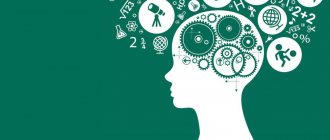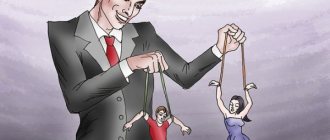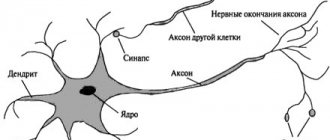Personality structure. Personality is a stable system of completely individual, psychological, and social characteristics. Psychology, as a science, considers only the psychological characteristics that form the structure of personality. The concept and structure of personality is a controversial issue among many psychologists; some believe that it cannot be structured and rationalized in any way, while others, on the contrary, put forward new theories of personality structure. But still, there are certain characteristics that, one way or another, exist, and they are worth describing.
Character is the most important component of personality; it demonstrates all a person’s relationships in the world. Attitude to other individuals, to some object, situation and, in general, to the whole reality that surrounds him.
Temperament is a manifestation of the dynamic properties of human mental processes.
Abilities are a set of individual typological characteristics that contribute to the manifestation of success in a certain activity.
The orientation of a person determines her inclinations and interests in a particular subject of activity. Volitional qualities reflect the readiness at some point to prohibit oneself, but to allow something.
Emotionality is an important component of the personal structure; with its help, a person expresses his attitude towards something through a certain reaction.
Human motivation is a set of motives that determine human behavior. Social attitudes and values play a major role in a person. It is them that society perceives in the first place and determines its attitude towards the individual. This list of characteristics is not exhaustive; in different theories of personality, additional properties can be found, highlighted by different authors.
Psychological structure of personality
Personal structure in psychology is characterized through certain psychological properties, without particularly affecting its relationship with society and the entire world around it.
Personality structure in psychology briefly. There are several components in personality psychology.
The first component of structure is directionality. The focus structure covers attitudes, needs, interests. One component of orientation determines human activity, that is, it plays a leading role, and all other components rely on it and adapt. For example, a person may have a need for something, but, in fact, he has no interest in a certain subject.
The second component of the structure is capabilities. They give a person the opportunity to realize himself in a certain activity, achieve success and new discoveries in it. It is the abilities that constitute a person’s orientation, which determines his main activity.
Character, as a manifestation of personality behavior, is the third component of the structure. Character is the property that is most easily observed, so a person is sometimes judged simply by her character, without taking into account abilities, motivation and other qualities. Character is a complex system that includes the emotional sphere, intellectual abilities, volitional qualities, and moral qualities that mainly determine actions.
Another component is the self-regulation system. Self-control of a person ensures proper planning of behavior and correction of actions.
Mental processes are also part of the personality structure; they reflect the level of mental activity, which is expressed in activity.
Socionic personality types in psychology.
Socionics is a concept developed by Aushra Augustinaviciute, based on the personality types proposed by Jung. Different sources contain different designations; they can be roughly divided into the following groups.
Analysts:
- INTJ is a strategist. He has a rich imagination, he always has a plan for the next Saturday, and for 20 years in advance.
- INTP is a scientist. Creativity and ingenuity are their strong point. They believe in science, they believe that it can explain everything.
- ENTJ – commander. Resourcefulness, courage, fortitude are the strong traits of such people. They always find a solution to a problem.
- ENTP is a polemicist. Thinkers with curiosity and a sharp mind. They are happy to get into arguments.
Diplomats:
- INFJ is an activist. Idealistic, sometimes vindictive, usually quiet, but inspiring.
- INFP is a mediator. Altruists who can come to the rescue at any moment.
- ENFJ is a coach. They have unusual charisma, natural leadership qualities, and can inspire and charm.
- ENFP is a fighter. More sociable, creative, imaginative, optimistic, enthusiastic.
Guardians:
- ISTJ is an administrator. They perceive only facts and are reliable.
- ISFJ is a protector. They have high responsibility and will help loved ones.
- ESTJ is a manager. Such people can easily manage the masses; they are skilled administrators.
- ENFJ – consul. Sociable, popular, love to take care of others.
Social structure of personality
When defining personality in sociology, it should not be reduced exclusively to the subjective side; the main thing in the structure is social quality. Therefore, a person must determine objective and subjective social properties that form his functionality in activities that depend on the influence of society.
Personality structure in sociology briefly. It constitutes a system of properties of an individual, which are formed on the basis of his various activities, which are influenced by society and those social institutions in which the individual is included.
Personal structure in sociology has three approaches to designation.
Within the first approach, a person has the following substructures: activity - purposeful actions of a person in relation to some object or person; culture – social norms and rules that guide a person’s actions; memory is the totality of all knowledge acquired through life experience.
The second approach reveals the personal structure in the following components: value orientations, culture, social status and roles.
If we combine these approaches, then we can say that personality in sociology reflects certain character traits that it acquires in the process of interaction with society.
Personality Traits: A Tool for Understanding People Better
All key personality traits can be divided into 6 large groups:
- Abilities are skills that are inherent at birth or acquired during growing up. This group includes the ability to learn, accumulate knowledge, create, and solve practical problems.
- Temperament is the dynamic properties of the human psyche. There are four types of temperament: sanguine, choleric, phlegmatic and melancholic.
- Character is a method of interaction between a person and society. Certain character traits are acquired in the process of communication with other people.
- Will is the conscious control of the psyche, thanks to which a person is able to overcome life’s difficulties.
- Emotions are positively or negatively colored individual experiences that arise as a response to a particular event.
- Motivation is the urge through which a person achieves a goal or realizes his own desires.
Demo lessons on the Coaching program
Get access
Personality structure according to Freud
The structure of personality in Freudian psychology has three components: Id, Ego and Super Ego.
The first component of the Id is the oldest, unconscious substance that carries human energy, responsible for instincts, desires and libido. This is a primitive aspect, operating on the principles of biological attraction and pleasure, when the tension of sustained desire is discharged, it is carried out through fantasies or reflex actions. It knows no boundaries, so its desires can become a problem in a person’s social life.
The Ego is the consciousness that controls the It. The ego satisfies the desires of the id, but only after analyzing the circumstances and conditions, so that these desires, when released, do not contradict the rules of society.
The super ego is the repository of a person’s moral and ethical principles, rules and taboos that guide his behavior. They are formed in childhood, approximately 3–5 years, when parents are most actively involved in raising the child. Certain rules are fixed in the ideological orientation of the child, and he supplements it with his own norms, which he acquires in life experience.
For harmonious development, all three components are important: Id, Ego and Super Ego must interact equally. If any of the substances is too active, then the balance will be disrupted, which can lead to psychological abnormalities.
Thanks to the interaction of the three components, protective mechanisms are developed. The main ones are: denial, projection, substitution, rationalization, formation of reactions.
Denial suppresses the internal impulses of the individual.
Projection is the attribution of one's own vices to others.
Substitution means replacing an inaccessible but desired object with another, more acceptable one.
With the help of rationalization, a person can give a reasonable explanation for his actions. Formation of a reaction is an action used by a person, thanks to which he takes an action opposite to his forbidden impulses.
Freud identified two complexes in the personality structure: Oedipus and Electra. According to them, children view their parents as sexual partners and are jealous of the other parent. Girls perceive their mother as a threat because she spends a lot of time with her dad, and boys are jealous of their mother before their father.
Video
Drill-driver DEKO DKCD20FU-Li-ion in case + 63 accessories, 2x1.5 Ah, Replaceable battery, 20 V, 42 Nm, 2 batteries
3598 ₽ More details
Roasted Semushka almonds, 150 g
279 ₽ More details
Foundations for problem skin
Personality structure according to Rubinstein
According to Rubinstein, personality has three components. The first component is directionality. The structure of orientation consists of needs, beliefs, interests, motives, behavior and worldview. A person’s orientation expresses his self-concept and social essence, orients a person’s activity and activity regardless of specific environmental conditions.
The second component consists of knowledge, ability and skills, the main means of activity that a person acquires in the process of cognitive and objective activity. Having knowledge helps a person to navigate well in the outside world; skills ensure the execution of certain activities. Skills help achieve results in new areas of subject activity; they can be transformed into abilities.
Individual - typological properties constitute the third component of personality; they manifest themselves in character, temperament and abilities, which ensure the originality of a person, the uniqueness of his personality and determine behavior.
The unity of all substructures ensures adequate functioning of a person in society and his mental health.
Also in a person, it is possible to determine certain levels of organization that implement it as a subject of life. Living standard - it includes life experience, moral standards, and worldview. The personal level consists of individual characterological features. The mental level consists of mental processes and their activity and specificity.
For Rubinstein, personality is formed through interaction with the world and society. The core of personality includes the motives of conscious actions, but also, a person has unconscious motives.
Differences between the concepts of “personality”, “individual” and “individuality”
These three concepts are quite close, and each of them can be used to emphasize that we are talking about a specific person. However, they all differ somewhat in meaning. Let's look at each concept in more detail.
- An individual is simply a unique person, like a character in a movie or story. For example, having met a new neighbor, you still do not know anything about him as a person or individual, but you can already quite identify him as an individual.
- Individuality is a system of psychological and behavioral characteristics of an individual, temperament, and communication style. Simply put, it is a set of qualities that distinguishes him from other people.
- Personality is the inner content of a person, realized in interaction with the outside world. A personality can be called an accomplished person who is unique for a reason, but because he has already formed an internal “core”. Sometimes the concepts of “individuality” and “personality” are identified.
Essentially, every person becomes an individual at the moment of birth. Gradually he grows, a certain character is formed, and individuality appears. As social experience accumulates, norms of morality and morality are formed, and principles of behavior are developed. It is these qualities that make him a person.
Personality structure according to Jung
Jung identifies three components: consciousness, the individual unconscious and the collective unconscious. In turn, consciousness has two substructures: the persona, which expresses the human “I” for others, and the self as it is – the ego.
In the structure of consciousness, the person is the most superficial level (conformity archetype). This component of the personality structure includes social roles and statuses through which a person is socialized in society. This is a kind of mask that a person puts on when interacting with people. With the help of persona, people attract attention to themselves and make an impression on others. Behind external signs, symbols of covering oneself with clothes, accessories, a person can hide his true thoughts, he hides behind external properties. Symbols of confirmation of social status are also important, for example, a car, expensive clothes, a house. Such signs can appear in the symbolic dreams of a person worried about his status, when he dreams, for example, that an object that he is afraid of losing in real life, he loses it in a dream. On the one hand, such dreams contribute to an increase in anxiety and fear, but on the other hand, they act in such a way that a person begins to think differently, he begins to take the thing lost in a dream more seriously in order to preserve it in life.
The ego is the core of personality in its structure and combines all the information known to a person, his thoughts and experiences, and is now aware of himself, all his actions and decisions. The ego provides a sense of coherence, the integrity of what is happening, the stability of mental activity and the continuity of the flow of feelings and thoughts. The ego is a product of the unconscious, but is the most conscious component because it acts from personal experience and based on acquired knowledge.
The individual unconscious is thoughts, experiences, beliefs, desires that were previously very relevant, but having experienced them, a person erases them from his consciousness. Thus, they faded into the background and remained, in principle, forgotten, but they cannot simply be repressed, therefore the unconscious is a repository for all experiences, unnecessary knowledge and transforms them into memories, which will sometimes come out. The individual unconscious has several component archetypes: shadow, anima and animus, self.
The shadow is the dark, bad double of the personality; it contains all the vicious desires, evil feelings and immoral ideas, which the personality considers very low and tries to look less at his shadow, so as not to face his vices openly. Although the shadow is a central element of the individual unconscious, Jung says that the shadow is not repressed, but is another human self. A person should not ignore the shadow, he should accept his dark side and be able to evaluate his good traits in accordance with those negative ones hiding in the shadow.
The archetypes representing the beginnings of women and men are the anima, which is represented in men, the animus - in women. The animus gives women masculine traits, for example, strong will, rationality, strong character, while the anima allows men to sometimes show weaknesses, lack of strength of character, and irrationality. This idea is based on the fact that the bodies of both sexes contain hormones of the opposite sexes. The presence of such archetypes makes it easier for men and women to find a common language and understand each other.
Chief among all individual unconscious archetypes is the self. This is the core of a person, around which all other components are gathered and the integrity of the personality is ensured.
Jung said that people confuse the meaning of ego and self and give more importance to the ego. But the self will not be able to take place until the harmony of all components of the personality is achieved. The self and ego can exist together, but the individual needs certain experiences to achieve a strong ego-self connection. Having achieved this, the personality becomes truly holistic, harmonious and realized. If a person’s process of integration of his personality is disrupted, this can lead to neuroses. And in this case, analytical psychotherapy is used, aimed at optimizing the activities of the conscious and unconscious. Basically the goal of psychotherapy is to work with the "extraction" of the unconscious emotional complex and work with it so that the person rethinks it and looks at things differently. When a person becomes aware of this unconscious complex, he is on the path to recovery.
Types of accentuations or psychotypes
In psychology, psychotypical concepts of personality are widely used, which to some extent indicate the presence of borderline deviations. Every person has an accentuation, which is developed to one degree or another and at any moment can develop into a serious problem.
The following types of accentuations in people are distinguished:
- Cycloid type (biphasic or cyclical mood swings from bad to good, instability of interests)
- Labile personality type (quick and uncontrollable mood changes, which in psychology are called rapid switching; even the person himself cannot predict changes in emotions);
- Asthenic type (a closed and serious person with a characteristic asthenic appearance, distinguished by stubbornness and poor adaptation to changing conditions);
- Sensitive option (high demands on oneself and others, impressionability and increased susceptibility);
- Psychasthenic personality type (distinguished by increased emotional rejection of responsibility; in psychology they are noted as reliable and reasonable people);
- Schizoid variant (in the first place is non-standard thinking, but its consistency is practically absent);
- Conformal type (they completely adapt to their environment and hate change);
- Unsustainable option (rejection of work activity with a craving for an idle existence without control);
- Hysteroid (requires increased attention to oneself, which is why he is prone to demonstrative behavior);
- Epileptoid type (restrained personality with outbursts of anger, loves clarity and certainty in everything);
- Hyperthymic (stable positive mood, openness and high energy).
The personality psychology of each person is a complex, branched structure. Even highly qualified specialists will not be able to identify all its branches. Insufficient understanding of how the brain works causes the continuous emergence of new theories and classifications, which positively prove themselves in practice until the first case that cannot be typed.
Personality structure according to Leontiev
The concept and structure of personality in A. N. Leontyev goes beyond the plane of relations to the world. Behind its definition, personality is another individual reality. This is not a mixture of biological features, it is a highly organized, social unity of features. A person becomes a personality in the process of life activity, certain actions, thanks to which he gains experience and socializes. Personality is experience itself.
Personality is not a complete person, as he is with all his biological and social factors. There are features that are not included in personality, but until it has manifested itself it is difficult to say in advance. Personality appears in the process of relations with society. When a personality arises, we can talk about its structure. The entire personality is a connected, integral unity, independent of the biological individual. An individual is a unity of biological, biochemical processes, organ systems, their functions; they do not play a role in the socialization and achievements of the individual.
Personality, as a non-biological unity, arises in the course of life and certain activities. Therefore, what emerges is the structure of the individual and a personal structure independent of him.
Personality has a hierarchical structure of factors formed by the historical course of events. It manifests itself through the differentiation of different types of activities and their restructuring, in the process secondary, higher connections arise.
The personality behind A. N. Leontiev is characterized as a wide variety of actual relationships of the subject that determine his life. This activity forms the foundation. But not all a person’s activities determine his life and build his personality. People do many different actions and deeds that have no direct relation to the development of the personal structure and may simply be external, not truly affecting the person and not contributing to its structure.
The second thing through which a personality is characterized is the level of development of connections between secondary actions, that is, the formation of motives and their hierarchy.
The third characteristic that denotes personality is the type of structure; it can be monovertex or polyvertex. Not every motive for a person is the goal of his life, is not his pinnacle, and cannot withstand the entire load of the pinnacle of personality. This structure is an inverted pyramid, where the top, together with the leading life goal, is at the bottom and bears all the load that is associated with achieving this goal. Depending on the main life goal set, it will depend on whether it can withstand the entire structure and the actions associated with it and the experience gained.
The basic motive of the individual must be defined in such a way as to support the entire structure. The motive sets the activity; based on this, the personality structure can be defined as a hierarchy of motives, a stable structure of the main motivational actions.
A.N. Leontiev identifies three more basic parameters in the personal structure: the breadth of a person’s relationships with the world, the level of their hierarchy and their joint structure. The psychologist also highlighted one interesting aspect of the theory, such as the rebirth of personality, and an analysis of what happens to it at this time. A person masters his behavior, new ways of resolving motivational conflicts that are associated with consciousness and volitional properties are formed. An ideal motive that is independent and lies outside the vectors of the external field, which is capable of subordinating actions with antagonistically directed external motives, can resolve the conflict and act as a mediating mechanism in mastering behavior. Only in the imagination can a person create something that will help him master his own behavior.
How do we know so much about personality and its characteristics?
Many outstanding psychologists and psychoanalysts have worked on the study of human personality. Among them are Sigmund Freud, Carl Gustav Jung, Alfred Adler, Ernst Kretschmer, Erich Fromm. Each of them is the founder of theories that study human personality. For example, Freud viewed the subject as a combination of three components - “it”, “I” and “super-ego”. Taken together, all these theories help modern specialists in the field of psychotherapy and psychology to study the basics of personality and define various manifestations of human individuality. If you have always been interested in personality problems and also want to devote yourself to studying it, take training and join your newly minted colleagues!











